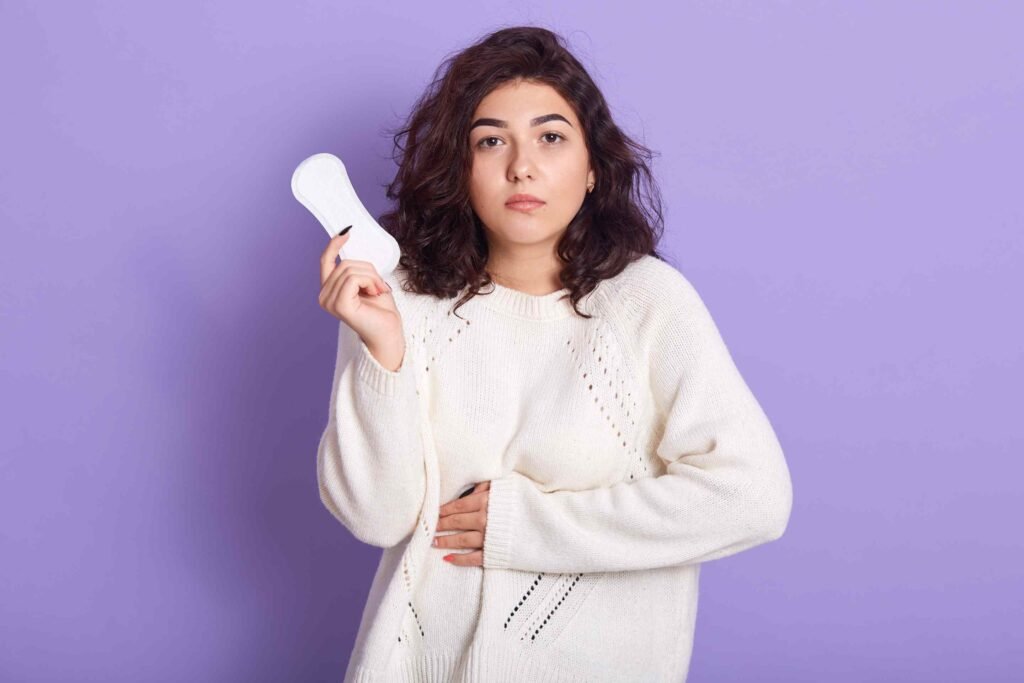What Does Bleeding in Between Periods Mean?
What Does Bleeding in Between Periods Mean?
Every person’s menstrual cycle has its own rhythm, but when something unusual happens, it can leave you feeling uncertain or worried. One of the most confusing situations is bleeding in between periods. You might notice light spotting a week after your period, or heavier flow that doesn’t align with your usual cycle. Understandably, questions arise: Is this normal? Could it signal a health issue? Or is it just one of those random body quirks?
Let’s unpack what bleeding between menstrual cycles really means, why it might happen, and when you should reach out to your healthcare provider. By the end of this blog, you’ll feel more informed and prepared to have conversations about your cycle without the guesswork.

Understanding the Menstrual Cycle
Before diving into the reasons behind spotting or unscheduled bleeding, it helps to understand how the menstrual cycle typically works.
- Day 1–5: Menstrual bleeding begins, marking the start of a new cycle. The uterine lining sheds because pregnancy hasn’t occurred.
- Day 6–14: Estrogen rises, and the uterine lining rebuilds itself. The ovaries prepare to release an egg.
- Day 14–16: Ovulation happens—an egg is released.
- Day 17–28: Progesterone takes the lead, stabilizing the uterine lining in case pregnancy occurs. If no fertilization happens, hormone levels drop, and bleeding starts again.
On average, cycles last about 28 days, though anything between 21–35 days can be considered normal. Bleeding outside of this rhythm—whether light spotting or something heavier—is what we call bleeding in between periods.
Is Bleeding in Between Periods Always Abnormal?
Not necessarily. Many people experience occasional spotting, and in some cases, it’s completely harmless. But if it happens often, is heavy, or comes with pain, it’s worth investigating further. Think of your body as sending signals: sometimes it’s just noise, but other times it’s an important alert.
Common Causes of Bleeding in Between Periods
1. Hormonal Fluctuations
Your hormones—especially estrogen and progesterone—keep your cycle running smoothly. When they swing out of balance, you may see unexpected bleeding. Stress, diet changes, excessive exercise, or conditions like thyroid disorders can throw hormones off track.
2. Ovulation Spotting
Some women notice light spotting around mid-cycle, which coincides with ovulation. This is caused by a sudden drop in estrogen right before the egg is released. It usually lasts only a day or two and isn’t a cause for concern.

3. Birth Control and Medications
Starting or changing hormonal birth control (pills, patches, implants, or IUDs) often triggers irregular spotting. Blood thinners and certain antidepressants can also affect bleeding patterns.
4. Pregnancy
Yes, pregnancy can sometimes be behind mid-cycle bleeding. Implantation bleeding—when a fertilized egg attaches to the uterine lining—may appear as light pink or brown spotting. If you suspect this could be the reason, a pregnancy test is the next step.
5. Infections
Sexually transmitted infections (STIs), yeast infections, or bacterial vaginosis can cause irritation and bleeding. Often, these are accompanied by other symptoms like unusual discharge, itching, or odor.
6. Fibroids and Polyps
Noncancerous growths in the uterus or cervix can lead to irregular bleeding. Fibroids can make periods heavier, while polyps often cause unexpected spotting between cycles.
7. Perimenopause
As women approach menopause, hormone levels fluctuate wildly, leading to unpredictable bleeding. This transition can last years, and mid-cycle bleeding is a common feature.
8. Underlying Health Conditions
Though less common, more serious causes like endometriosis, pelvic inflammatory disease, or even certain cancers (such as cervical or uterine) can present as bleeding between periods.

When Should You Be Concerned?
A little spotting once in a while isn’t usually cause for alarm. However, you should consider reaching out to a healthcare provider if you notice:
- Bleeding that’s heavy or accompanied by large clots
- Spotting after sex
- Bleeding that lasts longer than a few days
- Mid-cycle bleeding that happens regularly
- Associated symptoms like pelvic pain, fatigue, dizziness, or foul-smelling discharge
How Doctors Diagnose the Cause
If you visit your doctor with concerns about bleeding in between periods, they’ll likely ask about your cycle history, recent lifestyle changes, and any medications you’re taking. From there, diagnostic steps may include:
- Pelvic exam to check for visible abnormalities
- Pap smear to rule out cervical issues
- Blood tests to assess hormone levels and thyroid function
- Ultrasound for a closer look at the uterus and ovaries
- Biopsy in rare cases, if there’s concern about cancer
Treatment Options for Bleeding in Between Periods
Treatment depends entirely on the cause:
- Hormonal imbalance: Birth control pills or hormone therapy may help regulate cycles.
- Infections: Antibiotics or antifungal treatments clear these up quickly.
- Fibroids or polyps: These may require surgical removal if they cause persistent issues.
- Perimenopause: Hormone therapy, lifestyle adjustments, or non-hormonal medications can ease symptoms.
- Serious conditions: If underlying health problems are found, your doctor will develop a specialized treatment plan.
Lifestyle Factors That May Help
Sometimes, small lifestyle tweaks can reduce irregular bleeding:
- Manage stress with yoga, meditation, or journaling.
- Eat a balanced diet rich in iron and vitamins to support hormonal balance.
- Stay active, but avoid overexercising.
- Track your cycle using apps or journals—patterns often reveal hidden clues.

Myths About Bleeding in Between Periods
There’s a lot of misinformation out there, so let’s clear a few things up:
- Myth: Spotting between cycles always means pregnancy.
Fact: Pregnancy is one cause, but it’s far from the only one. - Myth: Mid-cycle bleeding is always a sign of something serious.
Fact: Often it’s harmless, especially if it happens around ovulation. - Myth: Only older women experience irregular bleeding.
Fact: Women of all ages can experience spotting due to various reasons.
Final Thoughts
Bleeding that happens outside of your normal cycle can be unsettling, but in many cases, it’s nothing to panic over. Hormones, birth control, pregnancy, infections, or even stress may be at play. Still, if bleeding in between periods happens often, is heavy, or comes with other concerning symptoms, it’s best to consult your healthcare provider.
Your menstrual cycle is like a built-in health signal. Paying attention to it, tracking changes, and seeking help when necessary are powerful ways to stay in tune with your body. Remember, you don’t have to navigate this alone—your doctor is there to help you figure out what’s going on and provide treatment if needed.



